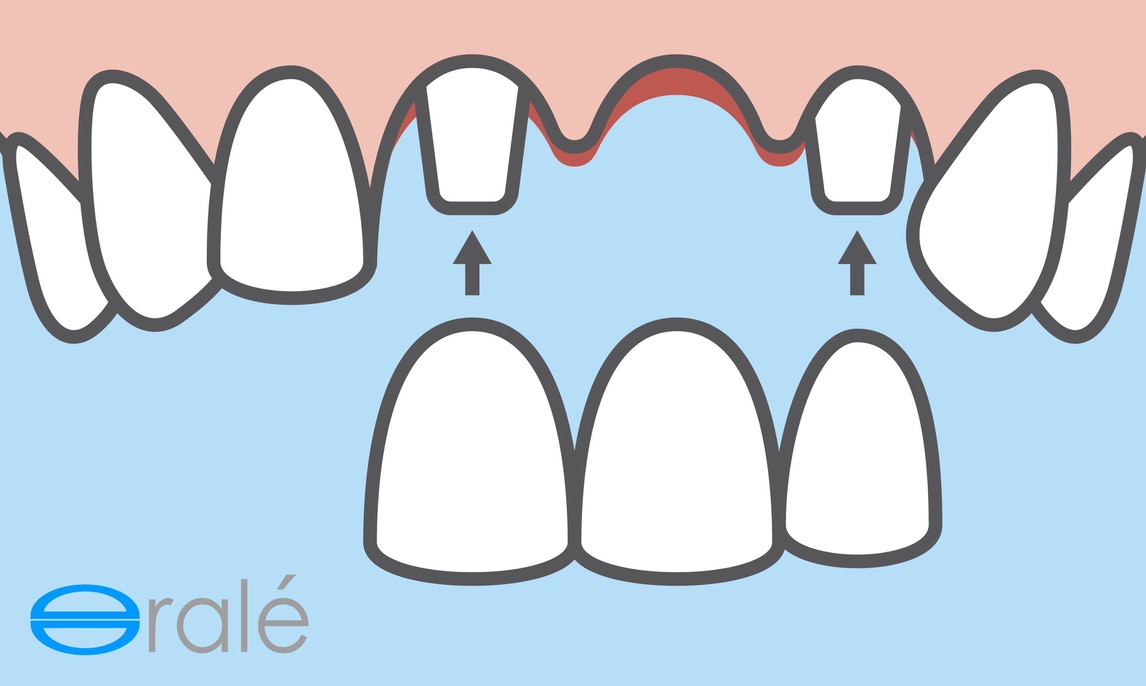BRIDGES
A bridge is used to restore the space caused by missing teeth. It is like a row of crowns joined together. The teeth either side of the gap, (or sometimes on just one side in a "cantilever" bridge ) have to be filed down to a stump, so the bridge can fit over them. It is permanently cemented in place. 
Bridges, like crowns, can be made from porcelain, metal (e.g. gold), ceramic (e.g. Zirconia), composite, or porcelain over metal.
An alternative to a bridge is an implant. Unlike a bridge, the big advantage of the implant is that it doesn't require the neighbouring tooth or teeth to be filed down.
A different type of bridge is the Maryland bridge. This consists of a false tooth attached to a metal "wing" that is bonded to the back of the neighbouring tooth. This requires a lot less tooth preparation, and another advantage is that it is cheaper than the full coverage bridge. A disadvantage is that the metal wing can, in some thinner teeth, cause the tooth to look a little greyer.
You need to wait at least 3 - 4 months after an extraction before getting a bridge, as the bone and gum will shrink as it heals and a gap will appear above the false tooth. We can make a plastic temporary bridge for the 3 - 4 month period.
Bridges can also be placed on implants, or a mix of teeth and implants.